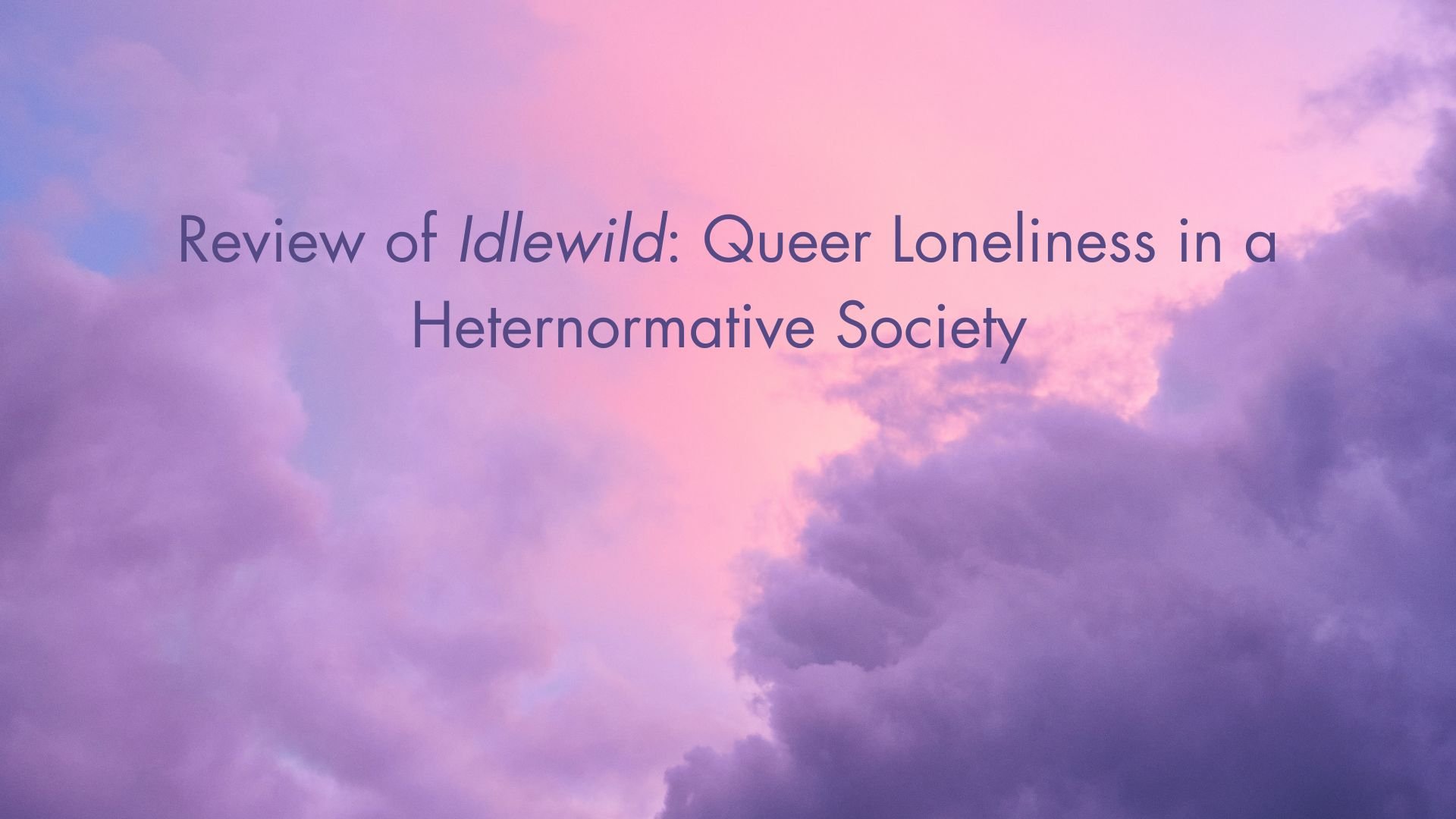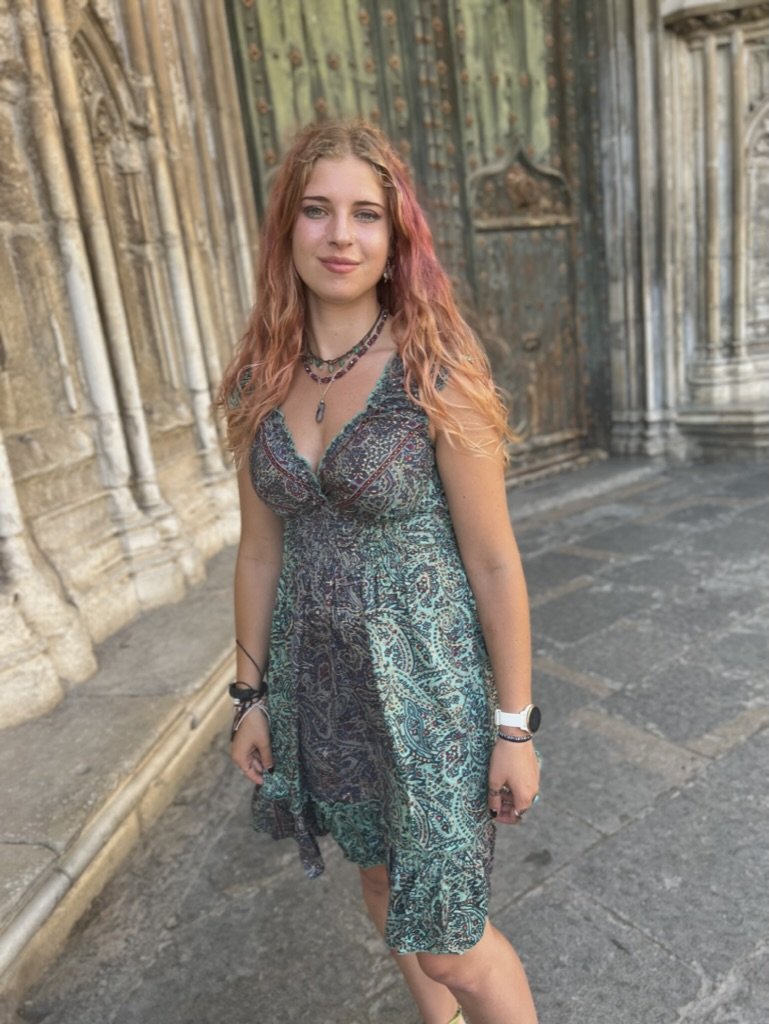Review of "Idlewild": Queer Loneliness in a Heteronormative Society
By Lucy Curtis
I have never been one to talk much about my experience of being queer in high school, mostly due to the fact I have never felt confident in my ability to put all those complex memories and emotions into words. In Idlewild, James Frankie Thomas did that for me.
The beginning of Idlewild didn’t pull me in right away. There was some initial info-dumping. As I was introduced to the main characters, I even thought they seemed annoying. For the first few pages, their obsession with figuring out who in their grade is gay seems strange at best, downright homophobic at worst. Even after reading the blurb that described this book as “queer,” I was skeptical. Goodness knows I don’t need more exposure to teen girls fetishizing gay men, which on the surface, it seems that that is what Fay and Nell are doing. However, James Frankie Thomas dives deep into Fay and Nell’s obsession: it stems from a sort of longing.
Fay has a noteworthy journey into discovering her own queerness. Throughout the book, she questions her obsession with gay men until she has a revelation that it is not some strange sexual fantasy—she wants to be a gay man. Her gender dysphoria unravels slowly and eloquently, and my heart went out to her in her various struggles that transpired due to her discomfort in her own skin. Fay is a compelling and gut-wrenching character. But the character that hit me the hardest was Nell, in how perfectly her experience encapsulated that of the teenage lesbian.
The plot follows Fay and Nell in an intense friendship throughout their junior and senior years at their quirky Quaker high school, Idlewild, in downtown Manhattan. Chapters alternate between Fay and Nell separately looking back on their high school experience and present tense stories from the “F&N” unit while they are still in school, often written in the first person plural perspective. Externally, the world of F&N is complicated—their latter half of high school is seated in 2002/2003, in the immediate aftermath of 9/11 and then the initial stages of the Iraq War. Yet, as teenagers often are, both Fay and Nell are more focused on the ups and downs of their adolescence.
However, alongside Fay’s and Nell’s somewhat small-picture interests, Idlewild as a text delves into larger-picture topics. The book handles themes like racism and homophobia deftly. There are a couple blatant incidents of these biases, but Idlewild mostly deals with microaggressions, little things that make one scratch their head and think, “wait a minute, that doesn’t seem right…” I applaud the author for being able to capture the exact feeling, that rotten sensation in your stomach that comes when you realize you might be the butt of some sort of sick joke.
But as the only lesbian, Nell misses out on what much of society deems as quintessential teenage rites—first dates, first kisses, gushing about crushes. Of course, being queer in itself does not equal being lonely. However, there can be an isolating nature to being queer and growing up in a heteronormative society.
And it’s an interesting study on homophobia, because not much happens in the book that is overtly homophobic. Nell, who identifies as lesbian, goes to a high school that is supposedly accepting. For a long time, Nell is unable to put her finger on the fact that she feels a sense of loneliness, and then when she does know it, she is not able to figure out why. Through Nell’s conversations with other characters as well as her own processing, the author expertly dissects the concept of queer loneliness.
On the surface, it doesn’t seem like Nell is lonely, or even lonely in her queerness. She has Fay, her best friend, who is interested in queer culture and accepting of Nell. But the key difference between Nell and Fay is that Fay is not attracted to women, and has not yet realized her own queerness. When Nell is talking to a boy who she suspects to be gay, she is reminded of the fact that she is the only openly queer kid at her school. “I was stuck being gay even when it was no fun,” she laments. Sure, no one has a problem with Nell. But as the only lesbian, Nell misses out on what much of society deems as quintessential teenage rites—first dates, first kisses, gushing about crushes. Of course, being queer in itself does not equal being lonely. However, there can be an isolating nature to being queer and growing up in a heteronormative society.
In her desire to find community, Nell applies early decision to Smith because she is enthralled with its lesbian culture. But she worries she won’t fit in because she is not one of what she deems to be the “real lesbians.” She worries about this partly because she feels she hasn’t suffered enough for her identity. Nell feels that there is an implication that in order to truly be a lesbian, or queer in general, one has to have some sort of mandatory trauma related to it. Additionally, she seems to have some mental image of what a lesbian is supposed to be—what they’re supposed to look like, how they’re supposed to act, the romantic experience they’re supposed to have had. Unable to fit neatly into society’s stereotypes for both heteronormative teenagers or queer individuals, Nell experiences imposter syndrome. What do you do when you’re not straight, but supposedly not queer enough either?
Through Nell, Idlewild assures the reader that while it might not be okay at present, someday it can be. It can be. Being queer is being queer enough.
This sort of crossroads—not straight enough, not lesbian enough—perpetuates the loneliness even more. While perhaps it is self inflicted—would other lesbians really outcast Nell like she fears?—that doesn’t make it any less real. At her current school, she knows she will be remembered as nothing other than “Nell the Lesbian.” At Smith, she wonders if she’ll even be recognized as lesbian. This paradox is crushing, and one I know all too well.
Something I appreciate about Idlewild is how it realistically handles Nell’s moving forward. She doesn’t have a magical happy ending. There are points when she still feels pangs of loneliness. But in her college years, she finds a partner, and later in life she reconnects with a high school classmate who has since come out as gay. Through Nell, Idlewild assures the reader that while it might not be okay at present, someday it can be. It can be. Being queer is being queer enough.
So much of homophobia is portrayed in the media as extremes—a parent tossing a child to the street, someone being downright bullied. And these things are terrible. They deserve attention. However, until Idlewild, I’ve failed to find media that adequately captures the more nuanced struggles of queerness. In other words, I’ve never been able to explain to my parents why there was a sort of existential loneliness for me without having a solid queer community in my high school. But Nell gets it, and James Frankie Thomas clearly gets it: even when surrounded by those who are accepting, it is highly possible to still feel othered. Reading Idlewild made me feel seen.
IDLEWILD
By James Frankie Thomas
400 pp. Overlook Press. $28.00
Order here.
Lucy Curtis is from Beverly, MA, but is happy to call Oberlin College home as well, where she is a rising senior creative writing major. She has work that will soon be published in Oberlin’s literary magazine, The Plum Creek Review, and is an arts & culture staff writer for the Oberlin newspaper, The Oberlin Review. At this point, Lucy is mainly a poet but appreciates and has worked within other genres of writing. Outside of writing, she loves nature walks, bright colors, cats, art, and playing guitar. She is excited to be working with COUNTERCLOCK, as she values interdisciplinary art and believes in the power of art and writing to uplift herself and those around her.



